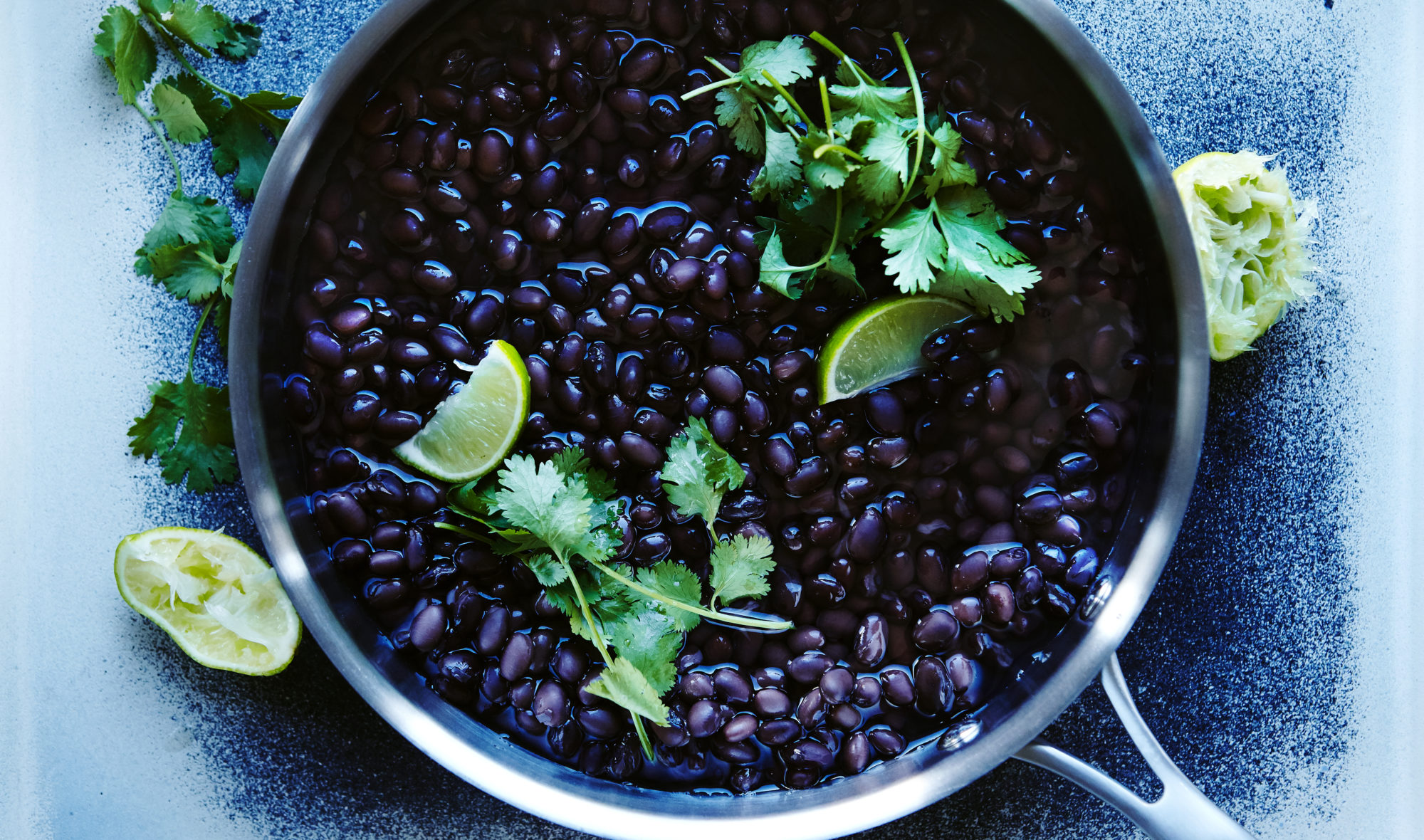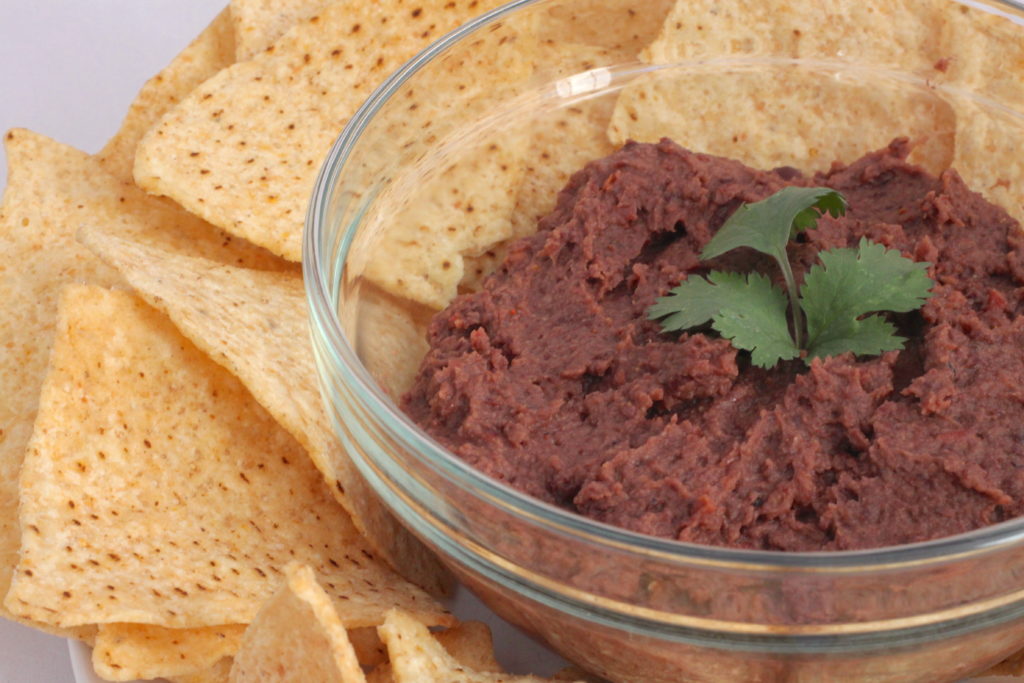Black Beans


Black turtle beans are a common dry bean. They offer some protein as well as carbohydrates and are high in fiber and folate. Dried beans are made edible through pre-soaking (in cold water for 8 hours or overnight) and cooking, or you can buy them ready-to-eat in cans. Black beans play a starring role in Latin American cuisine, though they work well in many different types of dishes, hot or cold.
Black turtle beans (often simply referred to as “black beans”) are a common dry bean.
Originally native to Mexico, today Brazil and India grow the most black beans. They continue to be a staple food in Latin American cuisines, including a classic dish called “frijoles negros” — which literally means “black beans”.
Black beans are also a star player in vegetarian cooking because of their meaty texture and protein content.
They’re available in their dried form, and ready-to-eat in cans.
Black beans are a small, oval-shaped dried bean.
As you’d expect, they are black in color, though cooked beans have a slightly purplish hue. Dried black beans have a deep, dark color.
One half-cup of black beans (boiled without salt) contains about 114 calories, 7.62 grams of protein, 0.46 grams of fat, 20.39 grams of carbohydrates, 7.5 grams of fiber, and 0.28 grams of sugar.
Black beans are considered a nutritional powerhouse due to the mix of fiber, protein, carbohydrates, and vitamins and minerals that they possess: they’re a good source of thiamin, magnesium, phosphorus, manganese, and iron, and a very good source of folate.
You can buy black beans dried (usually in a bag, found in the dry goods section of your supermarket among other legumes and lentils), or in a can.
Canned black beans are pre-cooked, meaning they are ready to eat or include in a recipe. Because dried beans typically require pre-soaking (about 8 hours), canned beans can be a quick alternative.
If using canned beans, check the ingredients first. Choose beans that contain as few other ingredients as possible. Canned beans usually contain salt; look for a no-salt or low-salt variety, if you can.
Dried beans should look dry, with no signs of moisture or mold. The beans should look uniform.
Whether dried or canned, store black beans in a pantry or similar cool, dry place. Dried beans will often last up to a year. For canned beans, heed the expiry date.
Once cooked, black beans will last several days in the fridge in a sealed container. If, after a few days, they smell or taste funny, discard them.
Dried beans must be pre-soaked before you can cook with them. This will make them more palatable (softening their texture) as well as make them easier to digest.
To prepare dried black beans, start by rinsing the beans you plan to cook. Pick through the beans and remove any that look ‘off’ or any detritus that doesn’t belong.
Next, put the beans in a large bowl or pot and cover them with cold water. Soak the beans for 8 hours or overnight. Then, drain the beans, discard of the soaking liquid and rinse with fresh, cool water. Place the beans in a large cooking pot and cover the beans with water. Bring to a boil over medium-high heat. Once the water is boiling, reduce the heat to low and bring to a simmer (you should barely see the water moving). For firmer beans, used in cold salads for example, leave the pot uncovered; for creamier beans, used in soups or burritos for example, cover the pot with the lid just slightly ajar. Cook for an hour and check for tenderness. If the beans aren’t tender yet, leave them on a bit longer. Note: Throughout cooking, be sure to add water as needed to keep the beans submerged. Once the beans are tender, remove from heat and drain cooking liquid. The beans are now ready to eat or to use in a recipe.
For canned black beans, simply rinse them before using. They are now ready to be eaten, cold or hot, or included in your favorite recipe.
Black beans have a relatively mild flavor that pairs well with bright and spicy flavors: think cilantro, chili, onion, and garlic.
Black beans make a great soup — because of their dense, meaty texture, they work well in a puree. They’re great in Tex-Mex style dishes such as chili, tacos, burritos, or nachos along with — or in place of — meat. Or include them in your next salad. (Hint: avocado, mango, black beans and cilantro is a winning combination.)

This dip is popping with flavor and protein, so it’s a winner all around! Use it as a dip, on it’s own, spread it on a wrap, or create an amazing layered dip with guacamole, salsa, and sour cream – the options are endless.
Prep Time: 5 minutes Cook Time: 0 minutes Yield: 1 cup
Put all ingredients into your food processor. Process until smooth.
Serve with veggies, tortilla chips, as a layered dip, or spread on a wrap.
Enjoy!
Precision Nutrition’s Encyclopedia of Food expands every single month as we highlight new foods and showcase beautiful food photography. If you’d like to stay up to date, simply click this link. From there, we’ll send you a FREE copy of our recipe book. We’ll also let you know when new and delicious foods are added to the site.
Black turtle beans are a common dry bean. They offer some protein as well as carbohydrates and are high in fiber and folate. Dried beans are made edible through pre-soaking (in cold water for 8 hours or overnight) and cooking, or you can buy them ready-to-eat in cans. Black beans play a starring role in Latin American cuisine, though they work well in many different types of dishes, hot or cold.